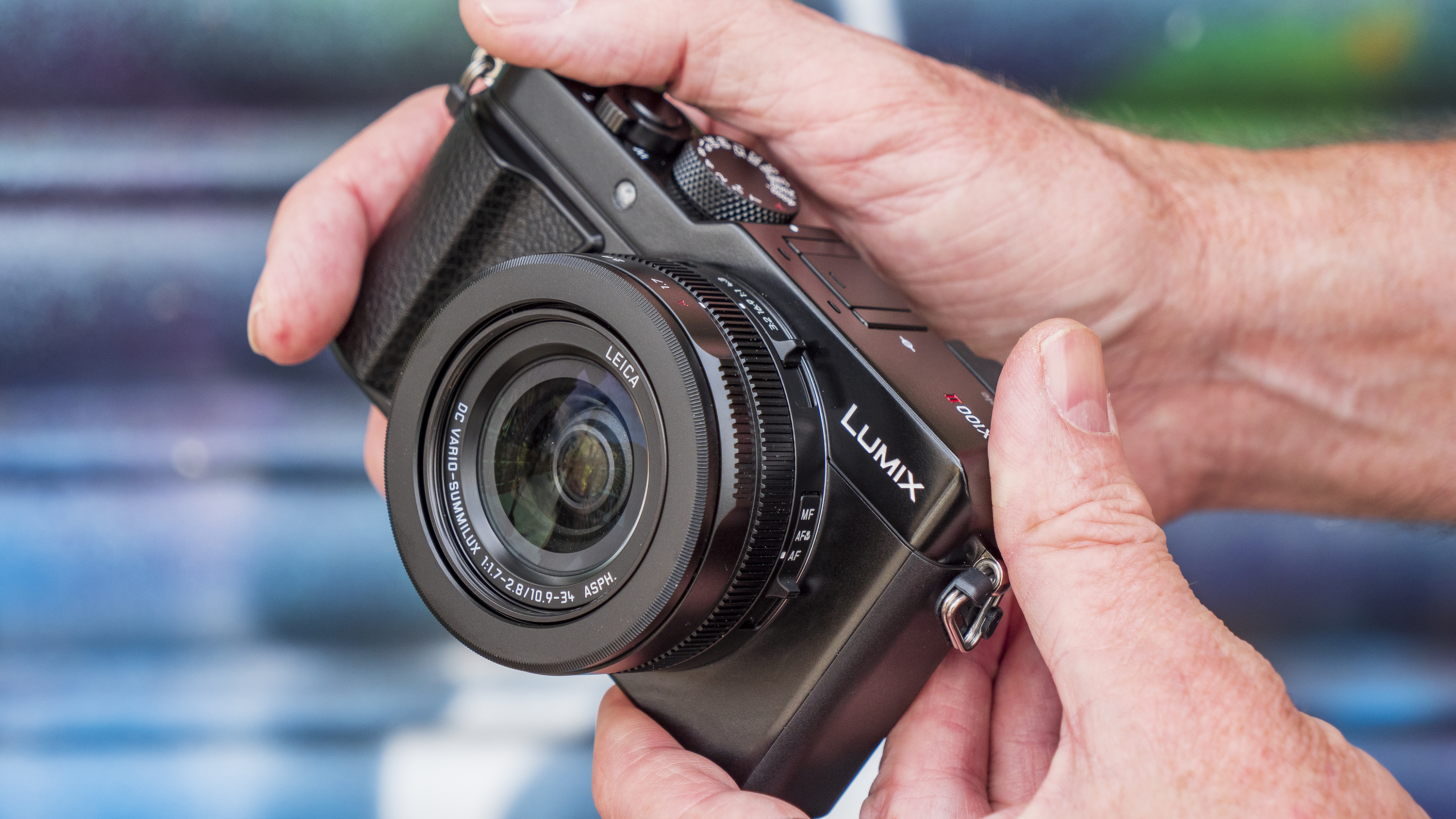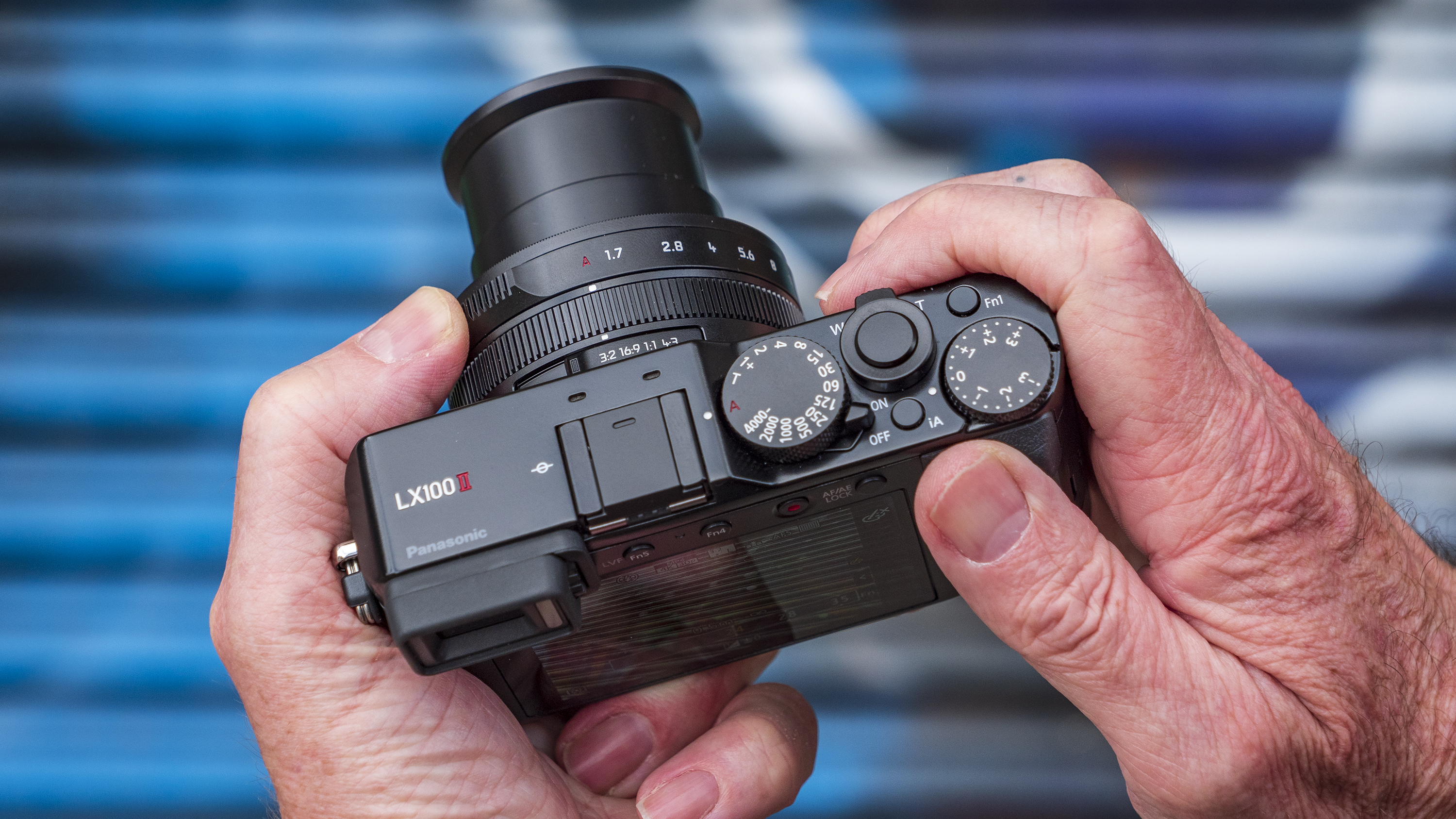Why you can trust TechRadar
Build and handling
- Exterior design little changed from LX100
- Plenty of external controls
- Enhanced handgrip
On the outside, the Lumix LX100 II looks very much like the original Lumix LX100, but a slight tweak to the handgrip makes it a little easier to hold securely. The Lumix LX100 II is also small enough, just about, to fit in a jacket pocket, although you’ll have to switch it off first, as the retracting lens extends some distance when the camera is switched on.
The shutter speed dial and aperture control ring both have a firm, precise action. The focus mode, aspect ratio and aperture rings on the lens are squeezed quite close together, though, so you need a certain amount of dexterity to change the aspect ratio setting.




The EVF resolution isn't the highest, but it’s more than adequate, and the EVF performs well in bright light if the rear screen becomes hard to make out. The rear screen itself is sharp and clear, and responds very well to touch input; in fact too well at times – as is often the case with touchscreens it’s a little too easy to touch the screen with the heel of your hand while holding the camera, and then find that the focus point is way off in the corner when you go to take the next shot.
You can switch off the touch control if you want to, although it’s undeniably useful for setting the focus point position (even while using the EVF), and the touch-shutter mode is handy for macro shots, or even surreptitious street photography with the camera held away from your face.
Street photographers may also be a little disappointed to see that screen is fixed
That said, street photographers may be a little disappointed to learn that the screen is fixed, without even a tilt mechanism, so waist-level shooting isn't an option. We’ve got so used to tilting screens on compact cameras that it’s a bit of a blow not to get one here.
The zoom action is also a touch pedestrian. You can use either the zoom lever around the shutter release button or the multi-function control ring on the lens, but both respond quite slowly. This is one area where regular ‘mechanical’ zooms have a major advantage, and it does detract from the Lumix LX100 II’s responsiveness in other areas.
This is a powerful camera that's packed with technology; however, getting the best out of it requires somewhat intricate interaction with the touchscreen display icons and menu system, and while the Lumix LX100 II’s physical controls are first rate, the digital interactions do get a bit fiddly.
Sign up for breaking news, reviews, opinion, top tech deals, and more.
Autofocus
- Focusing speeds are fast
- Depth From Defocus (DFD) technology works well
- Focus tracking suited to more predictable subjects
As it borrows its sensor from the Lumix GX9, it's no surprise to see the same 49-area focusing arrangement on the Lumix LX100 II.
The quoted focusing speed is a little slower on the LX100 II than on the GX9, at 0.1 sec compared to 0.07 sec, which is perhaps down to the built-in optics on the LX100 II. Regardless, autofocus speed is very good, as you’d hope in a camera designed for travel and street photography.
While the LX100 II doesn't feature a more advanced hybrid focusing system, the contrast detect AF with Depth From Defocus (DFD) technology (which assesses two images with different sharpness levels to determine correct subject distance) is fast and responsive, allowing you to point and shoot in a single action without worrying if the camera’s had time to focus.
Current page: Build, handling and AF
Prev Page Introduction and key features Next Page Performance and image quality
Phil Hall is an experienced writer and editor having worked on some of the largest photography magazines in the UK, and now edit the photography channel of TechRadar, the UK's biggest tech website and one of the largest in the world. He has also worked on numerous commercial projects, including working with manufacturers like Nikon and Fujifilm on bespoke printed and online camera guides, as well as writing technique blogs and copy for the John Lewis Technology guide.
